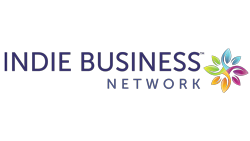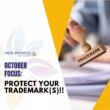Business is built on real relationships with real people, yet too many Makers and Creative Entrepreneurs think that if a marketing strategy does not produce quick sales, it's not a good marketing strategy. That's not true, and I'm going to tell you why.

After 15 years in business, I've learned that the marketing strategies that produce quick short-term results are generally unsustainable and ineffective over the long haul.
”
Donna Maria Coles Johnson, Indie Business Network
Shift Your Thinking from Acquiring Sales to Acquiring Relationships
You must shift your thinking from acquiring sales to acquiring relationships — relationships with people who want to buy your products.
This is easier said than done, but the payoff is huge for you personally, and for your business. Here are a few pointers to keep in mind, in particular when it comes to using email newsletters and other core branded tools to build relationships.
Seek First to Build Relationships
1. Talk with people about what matters to them.
The first thing you must do is know your your customers inside and out. Write love letters to your customers. Your email newsletter does not have to be fancy. It does have to be relevant.
What do your customers care about? What keeps them up at night? What makes them happy? What makes them sad? What makes them want to get up in the morning? What are they passionate about?
Those are their hot buttons. Press them in your newsletters, and they will respond.
As they respond, you begin to build relationships with them. As relationships strengthen, you will earn more and more access. As that happens, you will find that the path will lead straight to your shopping cart — over and over again.
2. Inform and entertain.
In this post entitled Your New Career: Publisher, I shared that, if you have a business, like it or not, you are also a publisher. I wrote that post in November 2008, and it is more true today than it was back then. Read it closely and take note.
You are not just a Maker. You are a Marketer. You are a Publisher.
Skip the obnoxious, attention grabbing headlines that have nothing to do with your brand or your audience. Stick with what's relevant. For example, if your product line is vegan, your core customer audience is composed of people who care about what vegans care about. Communicate with them about those issues.
While meat eaters like me might like (and maybe buy) your products if we come across them, we are not likely to subscribe to your newsletter or blog because we are not vegan.
Name your target and publish information that matters to them.
3. Be consistent.
Do not connect with people for a few months and then stop. They will forget about you and your products, and when an email newsletter or blog post shows up in their inbox again, many will unsubscribe without looking. In email, they might even click the “spam” link. If you get enough of those, you will be blacklisted.
(Check with your newsletter service provider for details about how they handle that. It's different for every company.)
Here is What Happened to Me
This past Sunday, I sent out my first email newsletter in nearly twelve months. I checked my stats shortly before publishing this post, and I got 6 spam complaints and 32 opt outs. That's a very tiny percentage for me.
On the flip side, I received 28 beautiful replies from people who said they missed me. They told me how happy they were to hear from me again. Some of them shared precious and confidential information about what is happening in their personal lives and businesses. Many provided feedback on things I shared in my publication.
Not only that, within 5 hours of publishing the newsletter, I received inquiries about IBN member products and events, as well as new members and registrations for upcoming events like Connection Day in New York City in September, and Portland in October.
I am answering each and every email as quickly as I can. (You should do this.)
I do not recommend that you skip publishing your newsletter for a year.
I am telling you this story because I believe that the biggest reason I did not receive hate email replies and tons of spam notices and unsubscribes is because I already have a relationship with the people who subscribe to my newsletter. They know me. They know I would not spam them. They may not want to receive my publication anymore, but they know my intentions are good. They respect what I am trying to do, and I respect that they have a right (and a duty) to unsubscribe from everything they don't want.
I stopped emailing newsletters for a while, and I told them why, and nearly every reply I received was from a woman entrepreneur (my target audience) who could relate to what I shared (they care about the things I shared with them).
See what I mean? I like when people buy things. I really do, and I'm up front about the fact that my newsletter is a marketing tool. All of my subscribers know I'm in business, so they get that.
But the real reason I'm connecting with them is because I care about them, and I want them to know that. I also want to help them in their business, so I will make it easy in my newsletter for them to know what I have to offer and how they can buy it.
But that will not be the focus.
Do you see the difference?
If you'd like to receive my newsletter, you can request it here:
I do my best mentoring there. I'd love to connect with you. Thanks!
Question
What about you? What is your newsletter like? Do you have one? Why or why not? Please share your thoughts and experiences in the comments below, or share on Facebook, Twitter and LinkedIn.



